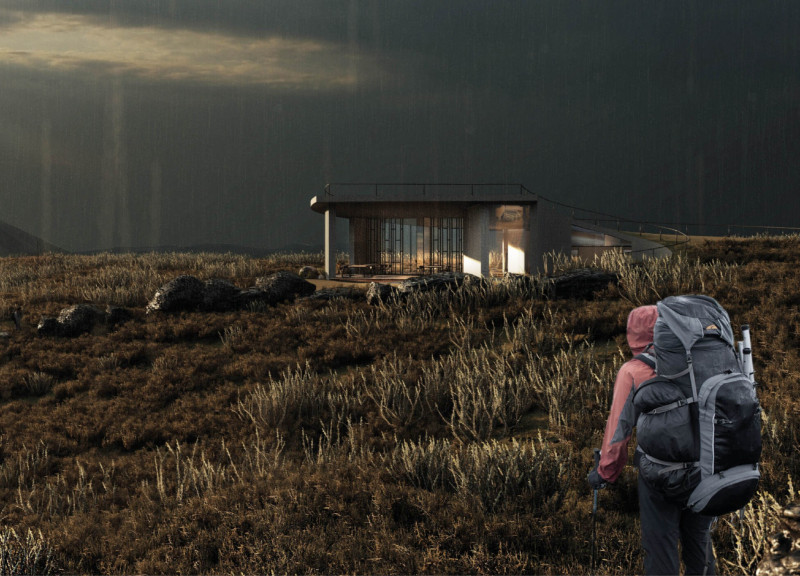5 key facts about this project
At its core, the project represents a thoughtful integration of architecture and nature, emphasizing a harmonious relationship between the built environment and the geological features of Iceland. The design encapsulates the raw beauty of the landscape while addressing functional needs, such as providing spaces for exhibitions, guidance, and rest. The visitor center is organized into distinct areas: an exhibition space featuring large glass panels that offer unobstructed views of the lava fields, a café and rest area encouraging social interaction, and necessary facilities for visitors and staff. Each zone is carefully considered to celebrate the landscape, drawing the eye toward the breathtaking vistas beyond.
The choice of materials in the visitor center is particularly noteworthy, as they reflect the textures and colors inherent in the local scenery. Lava stone forms an integral part of the structure, both in its foundation and external facades, creating a tactile connection to the surrounding environment. Glass is utilized extensively, allowing natural light to penetrate the interiors and providing panoramic views that enhance the visitor experience. The inclusion of concrete not only ensures structural integrity but also allows for the expression of curvilinear forms that mimic the dynamic shapes found in the nearby volcanic landscape.
One of the unique design approaches taken in this project is the emphasis on viewing corridors that intentionally frame specific geological features. These elements of the design serve to guide visitors’ attention and foster an appreciation of the natural beauty surrounding them. Additionally, the design includes adaptable hiking paths leading from the visitor center into the lava fields, promoting environmentally responsible tourism and facilitating exploration while minimizing ecological impact.
Sustainability is a core principle of the project. The design incorporates natural ventilation and strategic orientation to maximize solar exposure, reducing the facility's reliance on artificial heating and lighting. The inclusion of a green roof not only contributes to thermal insulation but also reinforces the connection between the architectural structure and its landscape, allowing for a visually coherent integration with the natural setting.
Overall, the Iceland Black Lava Fields Visitor Center stands as a testament to contemporary architectural practices that prioritize environmental sensitivity and visitor enjoyment. Its thoughtful design and material selection foster a unique experience for those who come to engage with the stunning volcanic landscape, while its functional spaces serve the practical needs of a modern visitor center. For those interested in exploring the nuances of this project further, a detailed review of architectural plans, sections, and designs will provide deeper insights into the innovative ideas that shaped this visitor experience.


























